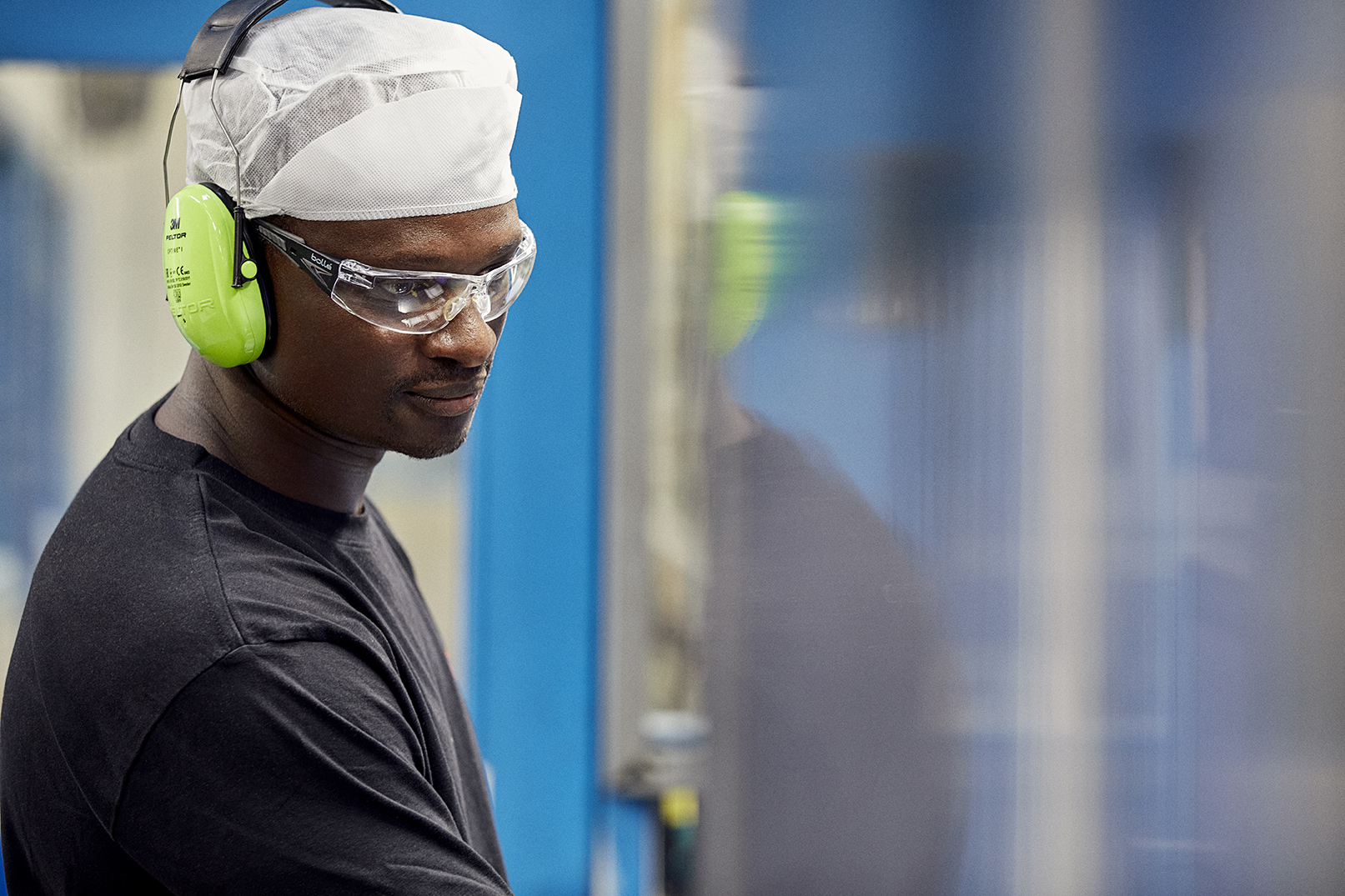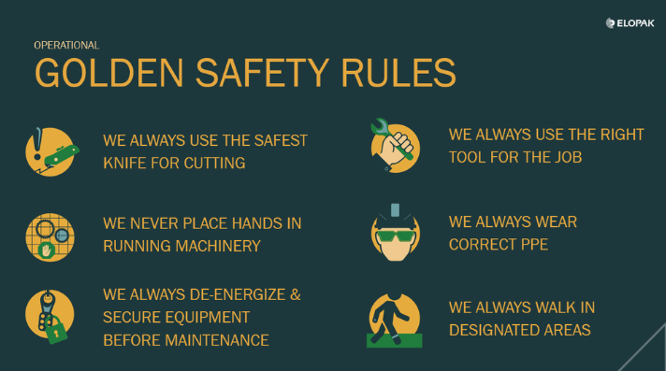Safety

Safety is a core value in Elopak and is a part of our processes and daily activities. With a strong commitment to ensure a safe workplace we are protecting our assets – people and property. Compliance with legislation, local requirements, company and industry standards supports our journey towards our zero-incident vision.
Approach
Incidents come with various costs, for both those directly involved, and for the company. To prevent incidents, we aim to identify safety hazards at an early stage, and to eliminate or minimize the accompanied risks. This is just as important as making sure our employees understand the connected risks and manage these.
To secure a uniform safety level, we have a governance including the Corporate Safety Policy, Safety Standard and various machine and work equipment directives incorporated or linked to our procedures. Key Performance Indicators (KPIs) are implemented across the company together with detailed information in case of an incident. This is reported and shared to enable us to understand if we are on track to meet our defined targets and used as a valuable learning tool in our continuous improvement system. Managers and individuals at all levels are responsible for safety within Elopak. Within this responsibility lies identification of safety hazards, target setting, measurement, securing right competence level, and risk management.
We have a risk-based approach to safety and make use of both external and internal audits, and assessments to verify our performance and use the intelligence from these as tools for further development. Running machinery in manufacturing is assessed with the hazards posing the highest levels of risks. These are identified through on-site systematic hazard and risk assessments. Some risks can be reduced or eliminated through improved processes and equipment, while remaining hazards are marked and included in training programs.
To ensure Elopak is a safe place to work, we invest in technical safety development of our machinery and accompanied processes on a running basis. Although technical safety is very important in our industrial environment, it is not enough. Awareness and behavior as well as collaboration, competence and culture are essential elements for a safe work environment. In addition to the Workers Council, we have involved all parts of the company through our Safety Network. Members of the Safety Network are typically HSE managers from each site or area with a close connection to Corporate Safety, functioning as the link between operational employees and safety management.
We ran a pilot at our converting plant in Terneuzen (NL) starting with a 360° survey and interviews, providing valuable insight on our strengths and improvement needs. A tailored Safe by Choice program was designed by local management in cooperation with local authorities, Corporate HR and Safety. Although coincidences may affect the incident frequency, the pilot plant had a significant decrease in injuries, indicating that a local Safe by Choice program will support the plants in reaching their safety targets.
To further develop our safety culture as part of the overall company culture, we started rolling out a survey in 2022 which is run across the whole company, site by site. Corporate Safety teams up with local management groups, including the safety network members, to discuss results as to agree on tailored programs to be included in local safety plans. We call this our Safe by Choice program.
Safe by Choice has been developed into a corporate program, running regular safety culture surveys at each site. The results from the surveys bring valuable insight into cultural strengths and development needs. Local workshops are hosted, after which local programs with core safety activities will be implemented.

Our Golden Safety Rules are a simple set of rules which all employees in operational areas including manufacturing, maintenance, technical service and R&D should follow.
The rules are clear, observable and absolute. These are not just rules that have to be followed – more importantly, they are rules we expect our employees will want to follow once they have learned about them.
The rules will support us in our safety journey and have been created based on frequent safety incidents in operational areas. By following these rules, we will significantly reduce our overall injury rate.
Adoption of the Golden Rules are supported by a series of nano learnings available in all Elopak languages.
I expect all employees in operations to understand and live by these rules which will help us to move towards our target of zero injuries
Ivar Jevne, EVP P&C and Group Procurement

Performance
Targets
Elopak makes no compromises on safety and aims for zero work-related injuries.

KPIs | KPI reference | Status 2022 | |
TRI rate (Total Recordable Injuries per million hours worked) | GRI 403-9 | 5,6 | |
Performance
Several initiatives over the past years have led to a decrease in injuries. In 2022, we launched our own Golden Safety Rules. Six simple rules were defined and communicated as a response to our most frequent incident types. Visuals, e-learnings and local programs across Elopak are still ongoing to ensure proper focus and knowledge to terminate or reduce future incidents.
As an example, injuries to hands and fingers by various types of cutting tools are covered by the following rule; We always use the safest knife for cutting. Cut incidents were reduced by 50% from 2021 to 2022.
Moving forward
Safety represents a key foundation driver in Elopak and is a key element in our continuous improvement program, Elovation. We also have an on-going long-term strategy to make Elopak an even safer workplace. The roll-out of the Golden Safety Rules and Safe by Choice program will continue during 2023.
